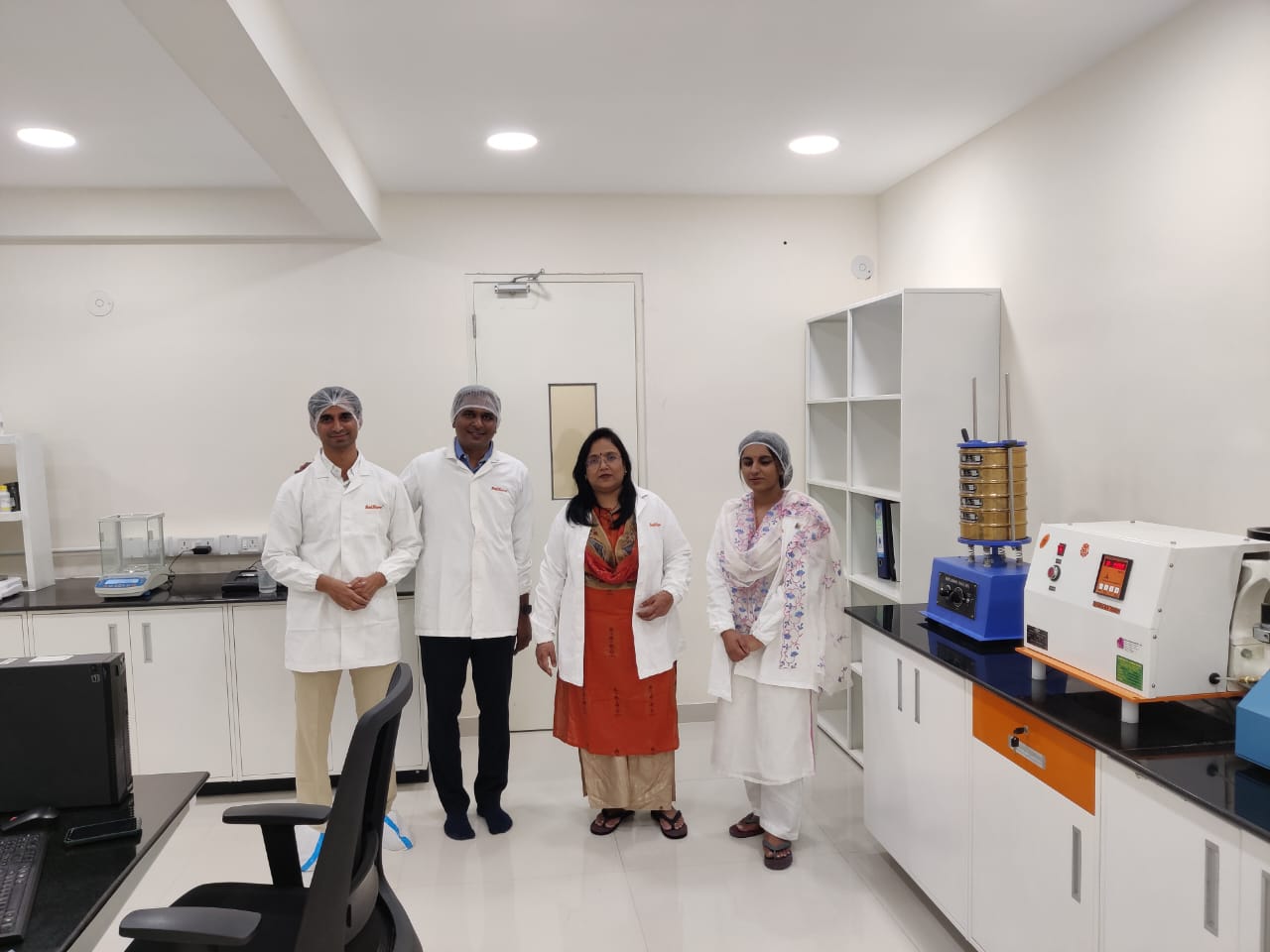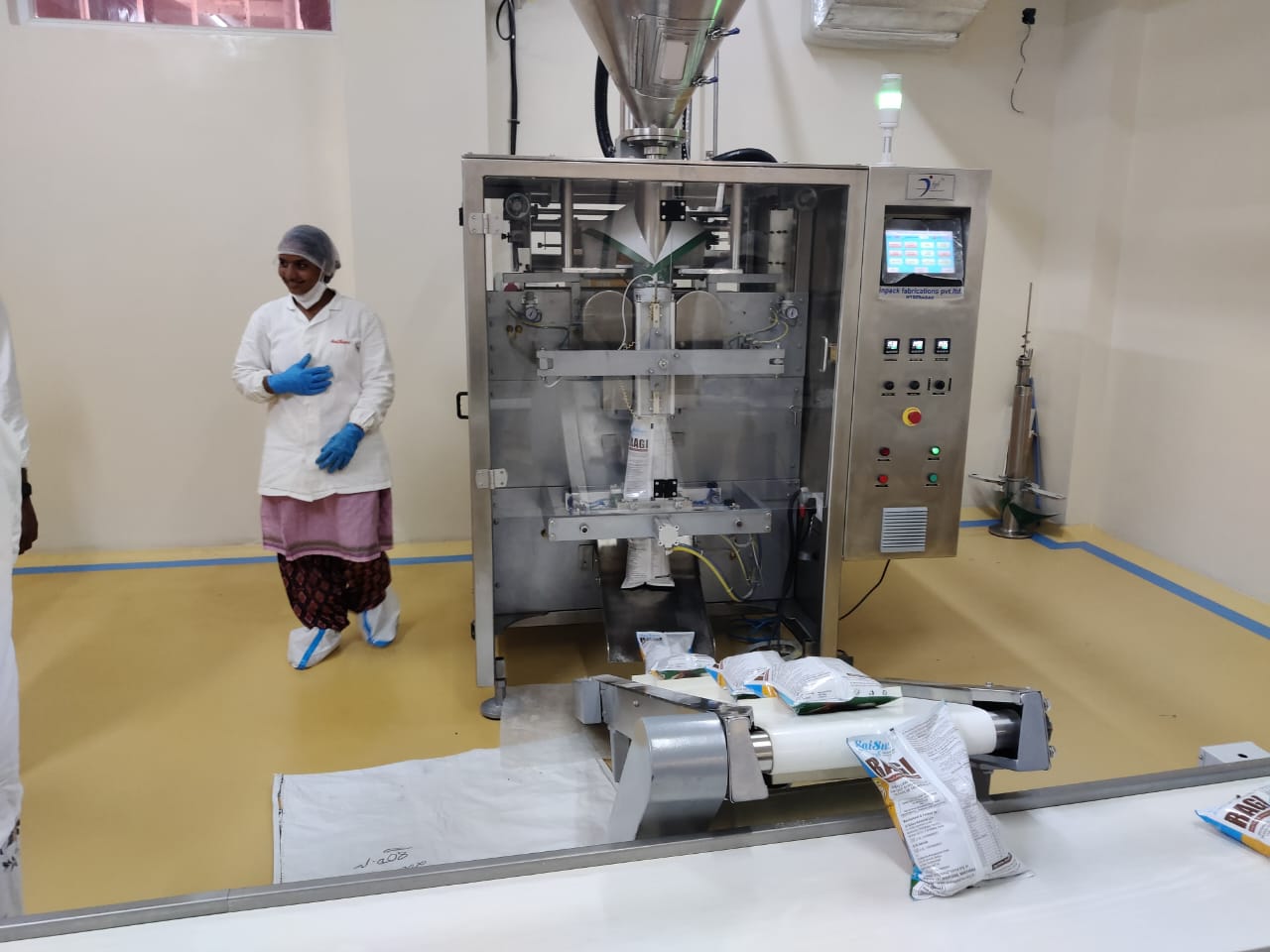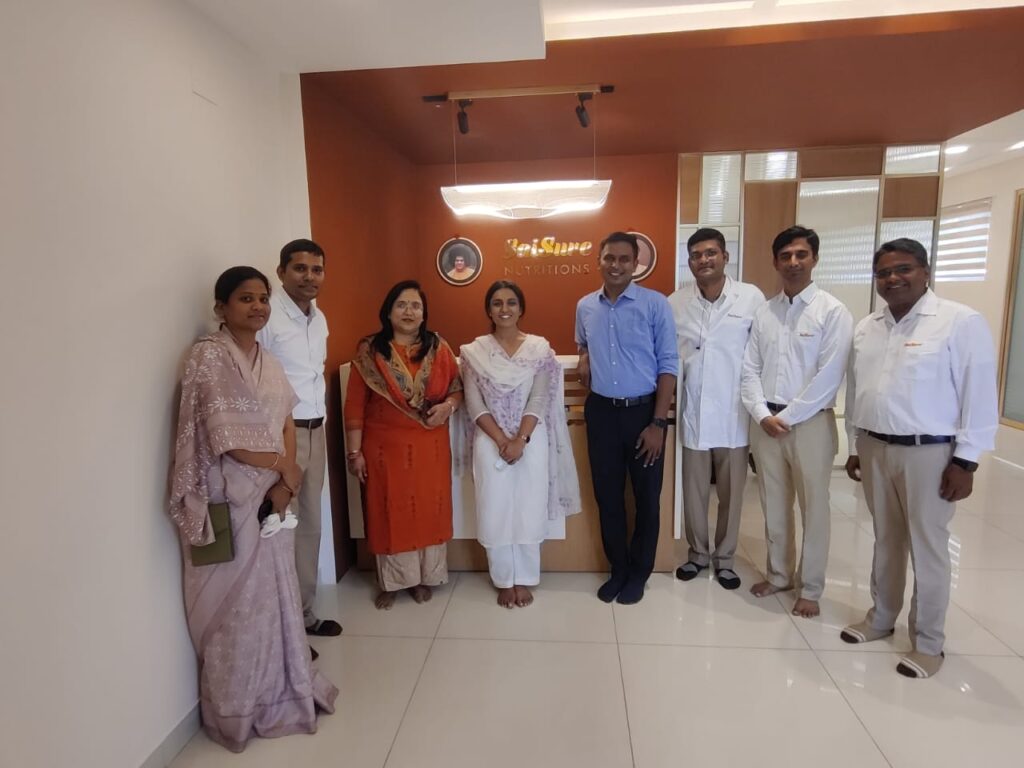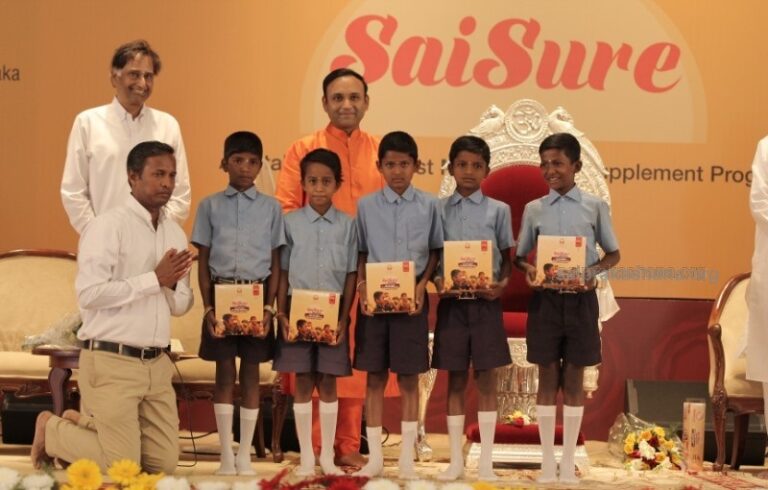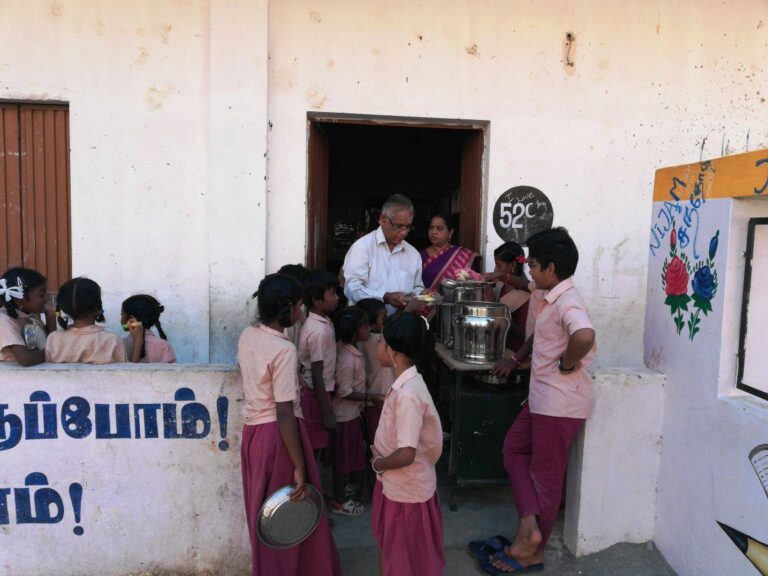Mrs. A Sridevasena, the Education Commissioner of Telangana, visits SaiSure Nutraceutical facility, 19th July 2023
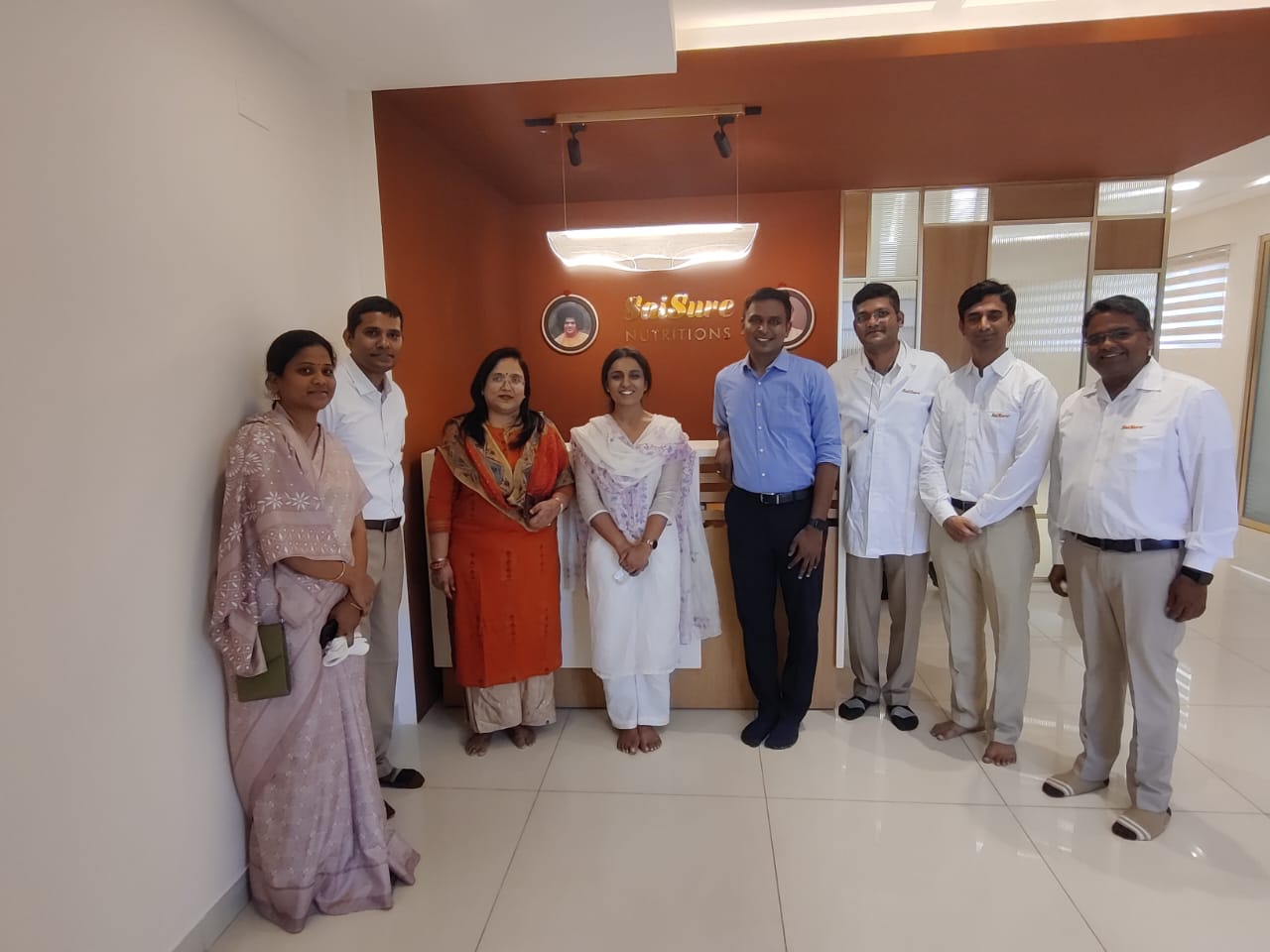
An inspection was conducted by the Director of School Education (Telangana state) as part of the process, aiming to gain insights into the procurement, preparation, fortification, supply chain management, and logistics planning of finger millet.
During the inspection, the technical aspects were elucidated by showcasing a state-of-the-art nutraceutical facility housed in a 5-storey building, which reflects our unwavering dedication to providing high-quality micro-nutrient health supplements.
Various advanced machinery, thoughtfully placed across different floors, was demonstrated, ensuring a smooth and efficient mixing of ingredients under strictly controlled temperature, humidity, and moisture levels.
Additionally, a detailed stocking plan was presented, outlining the organization and management of resources to meet demand effectively.
Furthermore, a special meeting was arranged with the women who work at the facility, emphasizing its significant role in providing livelihood opportunities to many women in the community.
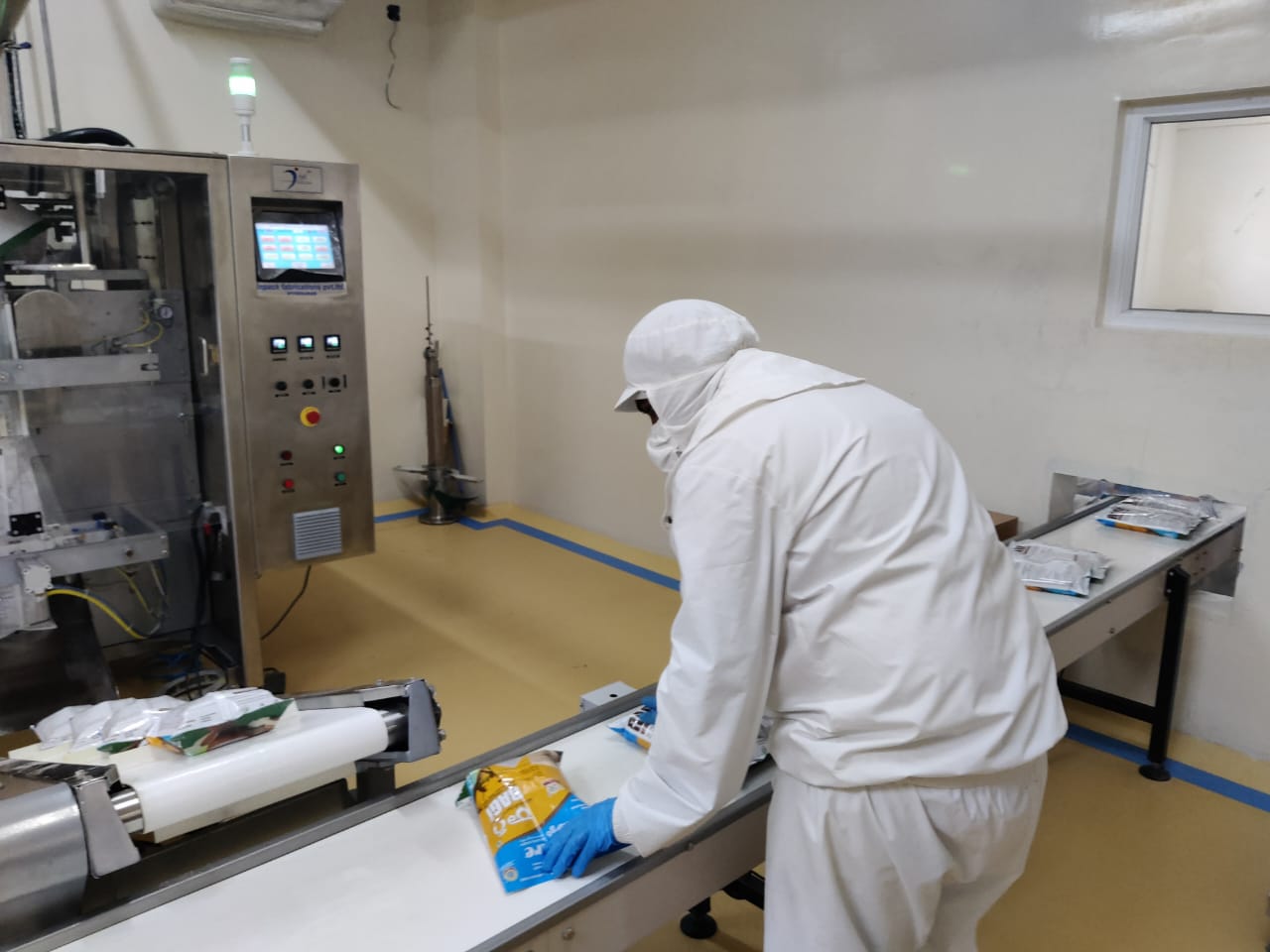
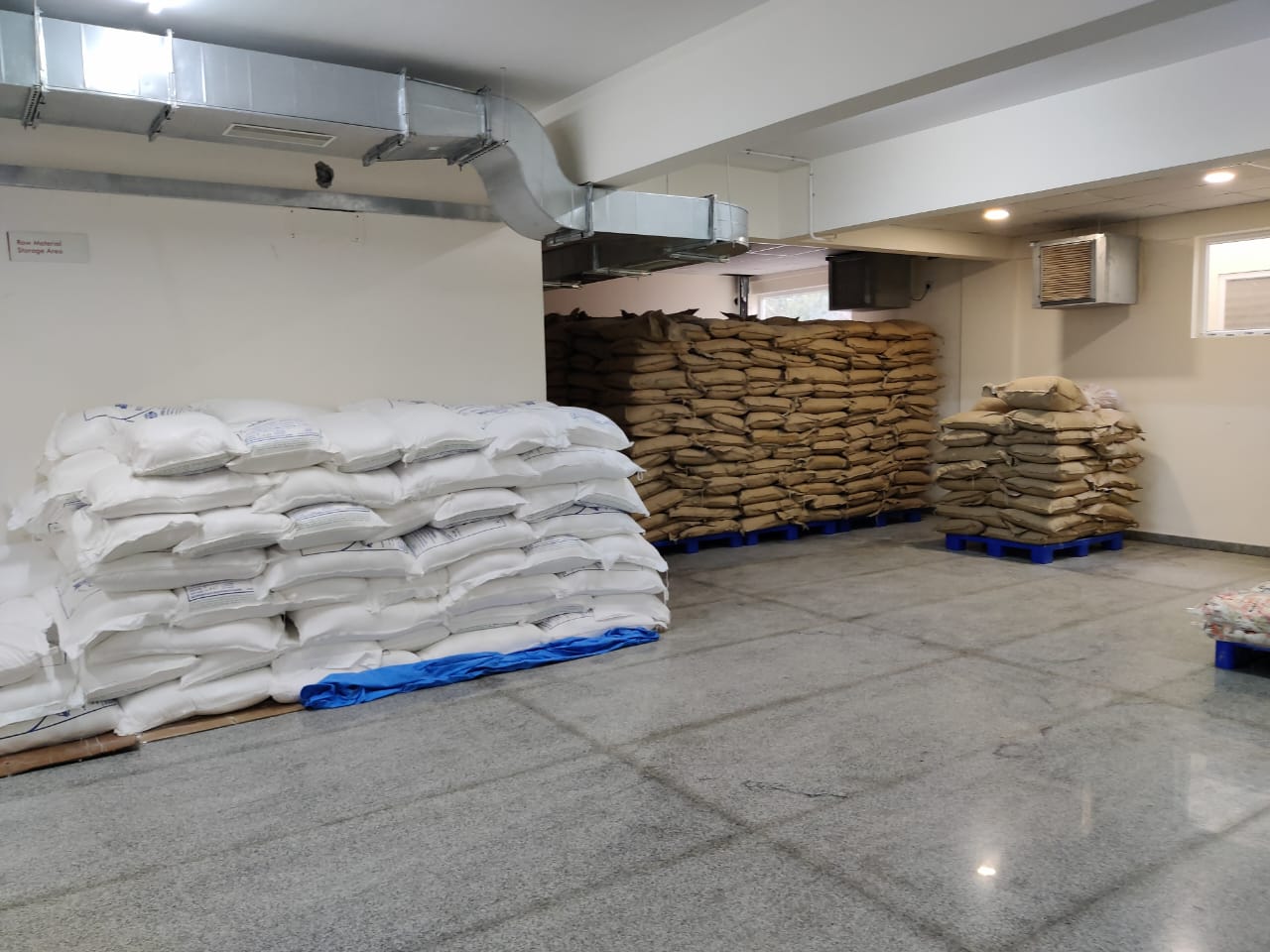


Below is a brief explanation done of equipment which is kept at each floor
5th Floor – Infeed Ingredients Section
Infeed ingredients in a nutraceutical facility refer to the raw materials or ingredients that are fed into the facility’s manufacturing process to create finished nutraceutical products such as dietary supplements, functional foods, or functional beverages. These ingredients may include vitamins, minerals, herbs, botanicals, amino acids, and other nutrients, as well as excipients, binders, and fillers used in the manufacturing process.
4th Floor – Sifting & Weighing Section
Sifting and weighing are used to measure and mix precise amounts of ingredients to make medications or chemicals. The process of sifting is used to separate the fine particles from larger ones, ensuring that the final mixture is homogeneous. Weighing, in this context, is used to measure the exact amount of each ingredient to ensure consistent and accurate results.
3rd Floor – Blending Section
Blenders are commonly used in nutraceutical factories for mixing and blending different ingredients to create a homogeneous mixture. These ingredients could include vitamins, minerals, herbal extracts, and other active compounds. The blender is an essential piece of equipment in nutraceutical production as it ensures a consistent and accurate mix of ingredients, leading to uniform end product quality. The type of blender used in a nutraceutical factory can vary based on the desired output, the scale of production, and the specific ingredients being blended. Ribbon blender as well as air vent are part of this setup. Air vent sock helps in maintaining a dust free environment and ribbon blender provides a better homogeneous mixing than the other conventional blenders.
2nd Floor – Metal Detection
A metal detector in a nutraceutical facility is a device used to detect the presence of metal contaminants in food and dietary supplement products. This helps to ensure that the products are free from foreign metallic objects, which could pose a health risk to consumers. The metal detector uses electromagnetic fields or metal-sensing technology to identify the presence of metal, and it is typically integrated into the production line to ensure that contaminated products are rejected before they reach the consumer.
2nd Floor – Dehumidifier
This dehumidifier controls the humidity levels. High humidity levels can cause problems such as: Encouraging the growth of mould, bacteria and other microorganisms which can contaminate the products and affect their quality and safety. Damaging the facility’s equipment and structures, such as walls, flooring, and ceiling. Increasing the risk of corrosion to metal parts and machinery. Impairing the effectiveness of air conditioning systems, making it more difficult to maintain optimal temperature and humidity levels. By controlling humidity levels, a dehumidifier helps maintain a healthy and safe environment, protects equipment and products, and ensures that the nutraceutical facility operates at peak efficiency.
1st Floor – Divertor
A divertor refers to a device that separates or diverts different materials or ingredients in a production line. The purpose of a diverter in a nutraceutical factory is to sort or separate different components of the production process, finished products, to ensure that the correct materials are processed and packaged appropriately. The use of a diverter in a nutraceutical factory can improve production efficiency. Segregation of the final product between jars and pouches will be decided at this stage.
Ground Floor – Packaging Area
Packaging materials selection: The appropriate packaging materials are selected based on factors such as product protection, shelf life, and labelling requirements.
Filling and sealing: The packaging material is filled with the nutraceutical product and then sealed to ensure product freshness and integrity. This can be done using various methods, including automatic filling machines, manual filling, and heat sealing.
Labelling and coding: The packaging is labelled with information such as the product name, ingredients, nutrition facts, and expiration date. Some nutraceutical factories also use coding techniques such as bar codes or QR codes for tracking and product traceability.
Quality control and inspection: The packaged nutraceutical products undergo quality control and inspection to ensure that they meet the necessary standards and specifications.
Storage and distribution: The packaged nutraceutical products are stored in warehouse and then distributed to retailers or directly to customers.
Product selection and preparation: Nutraceutical products are selected and prepared for packaging. This may involve measuring, mixing or encapsulating the products as needed.
Packaging materials selection: The appropriate packaging materials are selected based on factors such as product protection, shelf life, and labelling requirements.
Filling and sealing: The packaging material is filled with the nutraceutical product and then sealed to ensure product freshness and integrity. This can be done using various methods, including automatic filling machines, manual filling, and heat sealing.
Labelling and coding: The packaging is labelled with information such as the product name, ingredients, nutrition facts, and expiration date. Some nutraceutical factories also use coding techniques such as bar codes or QR codes for tracking and product traceability.
Quality control and inspection: The packaged nutraceutical products undergo quality control and inspection to ensure that they meet the necessary standards and specifications.
Storage and distribution: The packaged nutraceutical products are stored in a suitable warehouse and then distributed to retailers or directly to customers.
